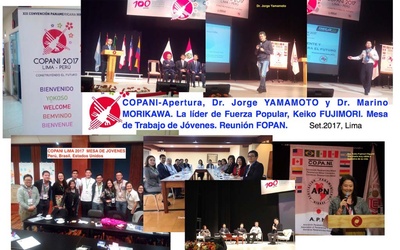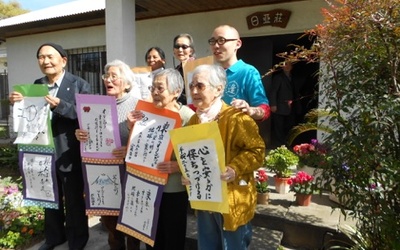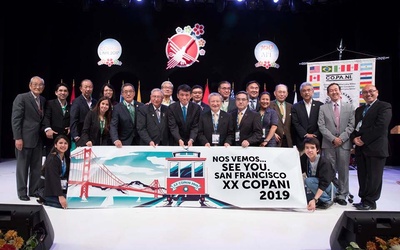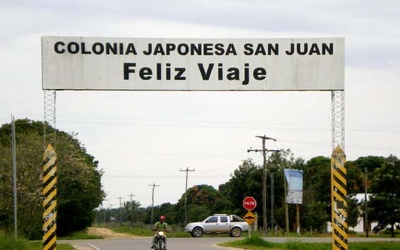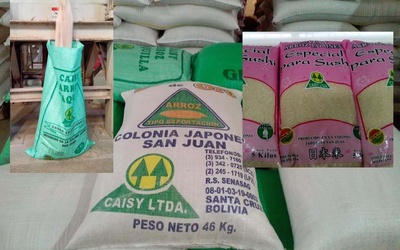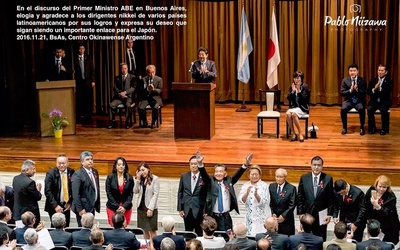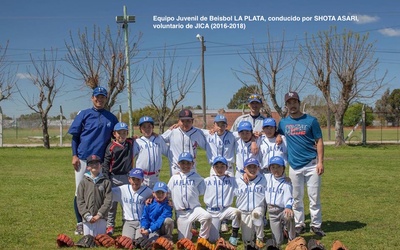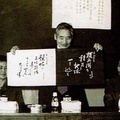
Alberto J. Matsumoto
@albertomatsumotoNisei Japanese-Argentine. In 1990, he came to Japan as a government-financed international student. He received a Master’s degree in Law from the Yokohama National University. In 1997, he established a translation company specialized in public relations and legal work. He was a court interpreter in district courts and family courts in Yokohama and Tokyo. He also works as a broadcast interpreter at NHK. He teaches the history of Japanese immigrants and the educational system in Japan to Nikkei trainees at JICA (Japan International Cooperation Agency). He also teaches Spanish at the University of Shizuoka and social economics and laws in Latin America at the Department of law at Dokkyo University. He gives lectures on multi-culturalism for foreign advisors. He has published books in Spanish on the themes of income tax and resident status. In Japanese, he has published “54 Chapters to Learn About Argentine” (Akashi Shoten), “Learn How to Speak Spanish in 30 Days” (Natsumesha) and others. http://www.ideamatsu.com
Updated June 2013
Stories from This Author
100th Anniversary of the Japanese Peruvian Association and the 19th COPANI Lima
May 4, 2018 • Alberto J. Matsumoto
The 19th Pan-American Japanese Convention (COPANI - Convención Panamericana Nikkei) was held in Lima, Peru from November 2nd to 5th, 20171, and at the same time, a ceremony was held to commemorate the 100th anniversary of the Peruvian Japanese Association (APJ - Asociación Peruano Japonesa) 2 . This year's COPANI featured a variety of programs under the theme of "Building the Future." There were numerous lectures, including a keynote speech by economist Luis Baba Nakao on current global economic trends, …
Are Japanese Latinos in Japan Preparing for Retirement?
April 2, 2018 • Alberto J. Matsumoto
Thirty years have passed since the "dekasegi" phenomenon began in Japan, and many Japanese South Americans have now settled in Japan. The proportion of elderly people is gradually increasing, and there are also increasing cases of families who have decided to live in Japan permanently bringing over their elderly parents from their home countries. Are Japanese Latinos in Japan "prepared for retirement"? In Japanese communities in South America, there are unique elderly support and welfare services that utilize donations from …
Japanese People Around the World: From the End of the Edo Period to Today - Part 2
Dec. 28, 2017 • Alberto J. Matsumoto
Read Part 1 >> Some say that overseas migration, which began in earnest in the Meiji era, did not achieve the results that had been expected. Hundreds of thousands of Japanese emigrated to North and South America before the war, but that number was less than 1% of Japan's total population, and far more people went to the Americas from Europe. Despite unfavorable trade conditions, partly due to the national colonial policy, Meiji Japan's industrial reforms and other developments in …
"Japanese Americans" around the world - From the end of the Edo period to today - Part 1
Dec. 27, 2017 • Alberto J. Matsumoto
Currently, there are approximately 3.5 million people of Japanese descent living overseas.1 Although it depends on how you define "Japanese descent," here we define it as Japanese people living overseas and their descendants. Some third- and fourth-generation Japanese do not consider themselves to be of Japanese descent, but these people are included in the Ministry of Foreign Affairs' statistics on the number of Japanese people residing overseas, totaling 1.33 million (870,000 long-term residents and 460,000 permanent residents) .2 Before the …
New challenges for the Japanese colony in Santa Cruz, Bolivia
Sept. 29, 2017 • Alberto J. Matsumoto
In May of this year (2017), I went to Santa Cruz, Bolivia as a lecturer for the overseas training of JICA Japanese Community Volunteers. This training was aimed at the "Japanese Community Youth and Senior Volunteers" dispatched from Japan to Latin America. As part of the training, I visited the San Juan Colony, 138 km away from Santa Cruz, a two-and-a-half hour drive, and the Okinawa Colony, 100 km southeast of there, where I had the opportunity to tour some …
The Efforts and Roles of JICA's Japanese Community Volunteers: Participating in an Overseas Training Program in Bolivia
Sept. 1, 2017 • Alberto J. Matsumoto
Japan dispatches many cooperation volunteers to developing and emerging countries as part of its ODA (Official Development Assistance). The most well-known is the Japan Overseas Cooperation Volunteers (JOCV), dispatched by the Japan International Cooperation Agency (JICA). When it comes to developing countries, variety shows often feature the activities of current or former JOCV members. JICA also has its own support program for Japanese communities in Latin America, and there is a volunteer system for young people and seniors1 . The …
Measures to strengthen cooperation between Japanese descendants in Latin America and Japan
Aug. 4, 2017 • Alberto J. Matsumoto
Since the inauguration of the second Abe Cabinet at the end of 2012, the Prime Minister has been proactively holding talks with local leaders and people involved in the Japanese community whenever he visits South American countries. At the same time, Japanese embassies and JICA offices have also begun to interact more with Japanese descendants and are seeking ways to strengthen future cooperative relationships. This is because in Latin American Japanese communities, where a generational change is underway, third and …
The challenges faced by second-generation Japanese Latinos living in Japan
May 31, 2017 • Alberto J. Matsumoto
A quarter century has passed since Japanese workers from South America came to Japan. If we include those who have been here since before the 1990 revision of the Immigration Control Act, it has been 30 years already. During that time, many have come and gone due to the economic situation in Japan and the world, as well as the economic recovery of South American countries, and some have returned in recent years after having once left Japan. In any …
Japanese Community and the Japanese Millennial Generation in the Global Digital Era
May 22, 2017 • Alberto J. Matsumoto
The generation born between the 1980s and the early 2000s is called the "millennials." Those born and raised during Japan's bubble economy (December 1986 to February 1991) are undoubtedly millennials, but in addition, those who are graduating from high school or university in 2017 also fall into this category. They are a generation born into this generation. How to manage this new generation of young people, how to develop them as human resources useful to society or the company, and …
Japanese Americans in Sports: Proud Challenges and Alliances
May 5, 2017 • Alberto J. Matsumoto
At the 2016 Rio Olympics, the local Japanese community supported Japan in various ways. Not only did they provide medical support1 and volunteer guidance for the thousands of Japanese spectators who came to Brazil, but they also cheered on the Japanese athletes at each event, even preparing carp streamers for the women's marathon. Behind the scenes, the official mascots, Vinicius and Tom, were created by Luciana Eguchi, a Japanese Brazilian, and the torch for the Olympic torch relay was designed …

